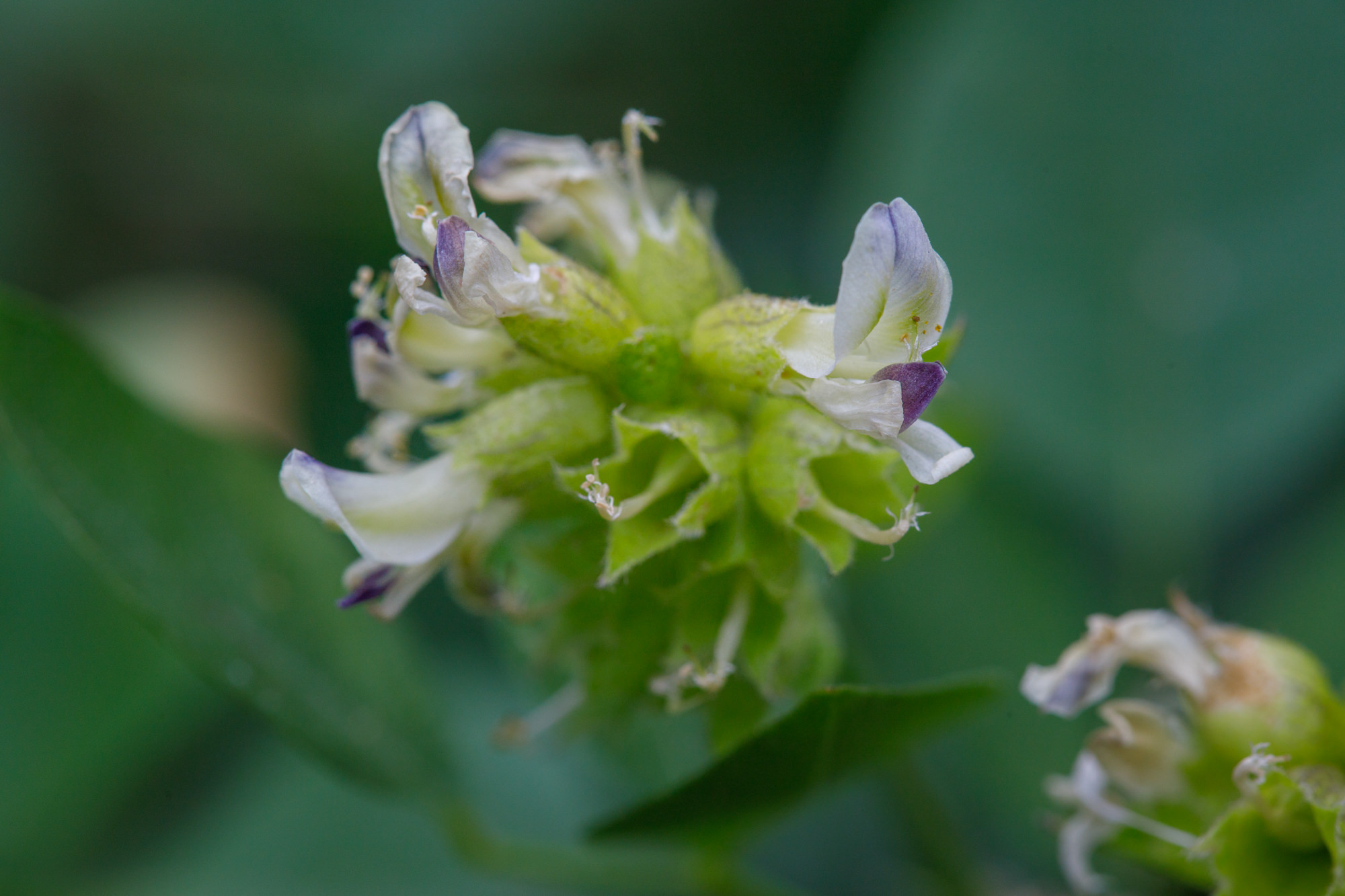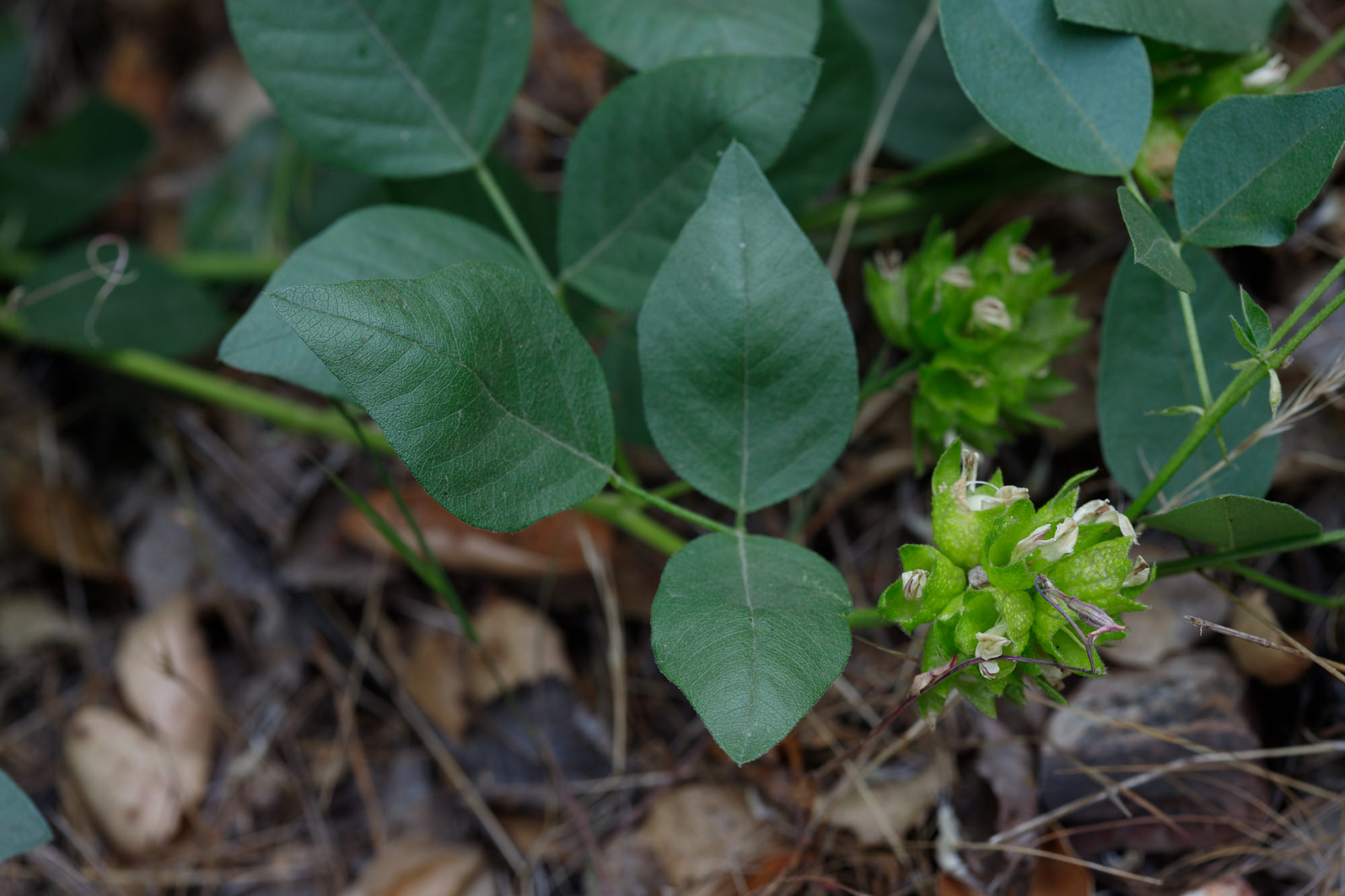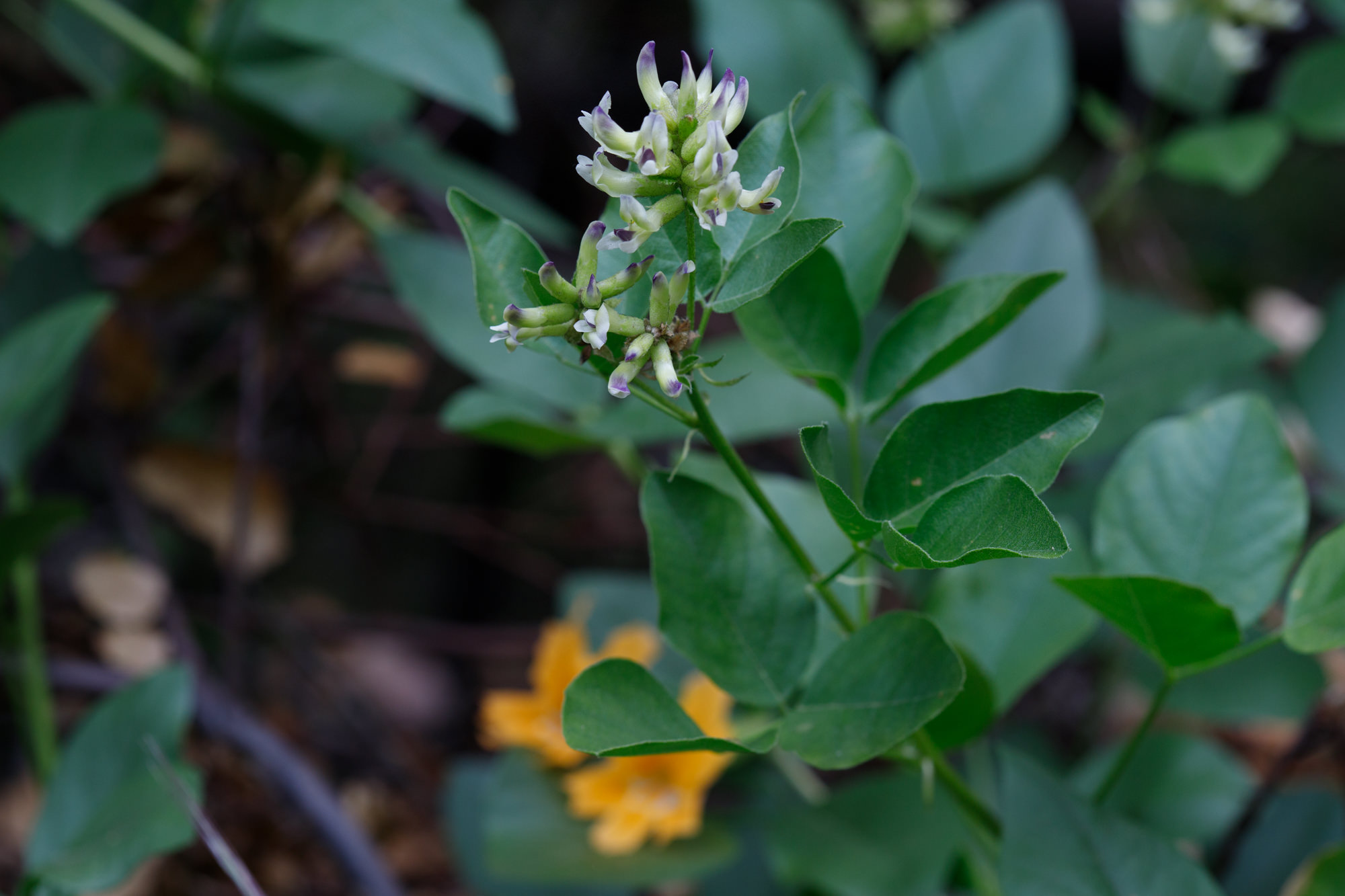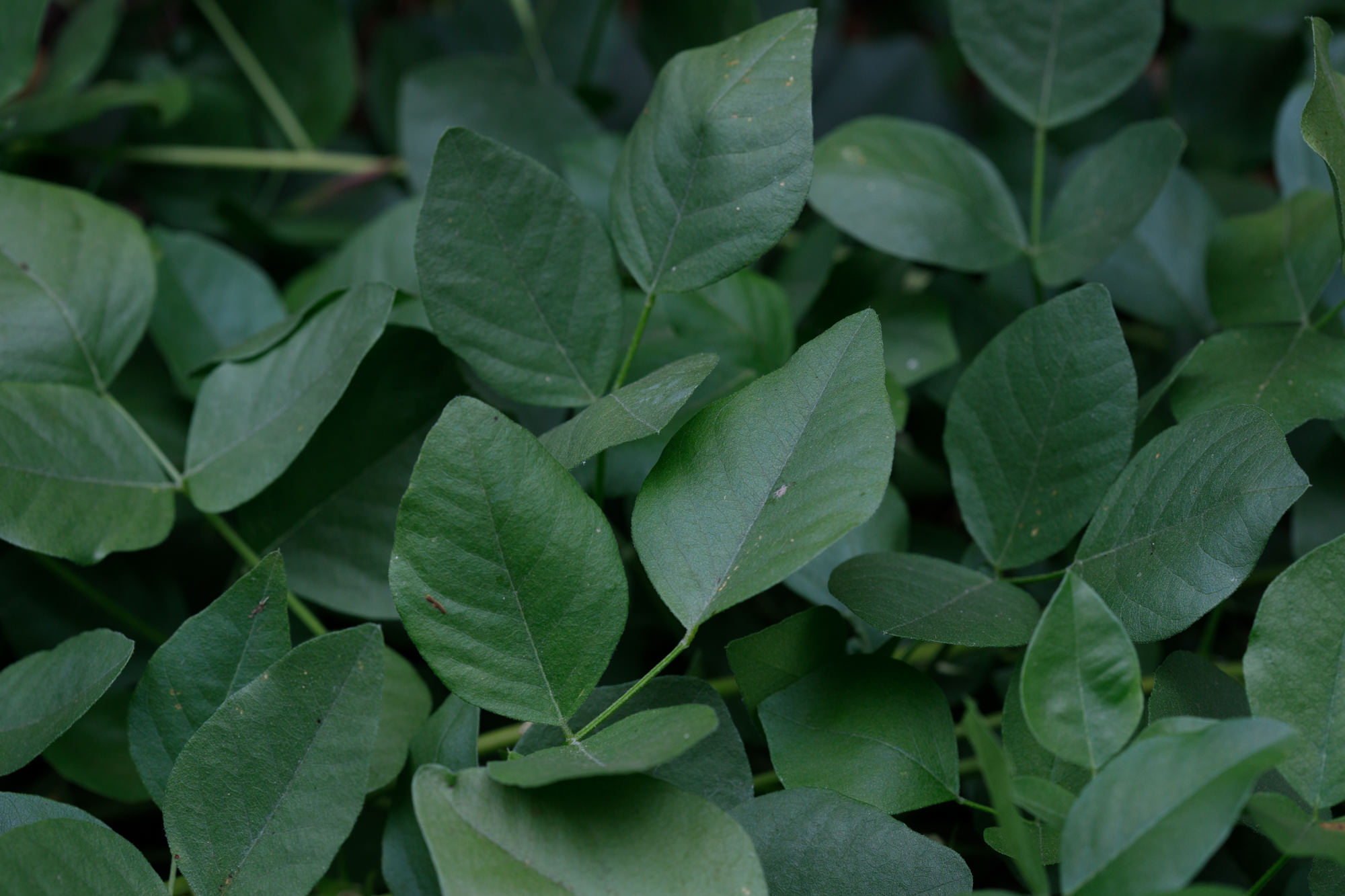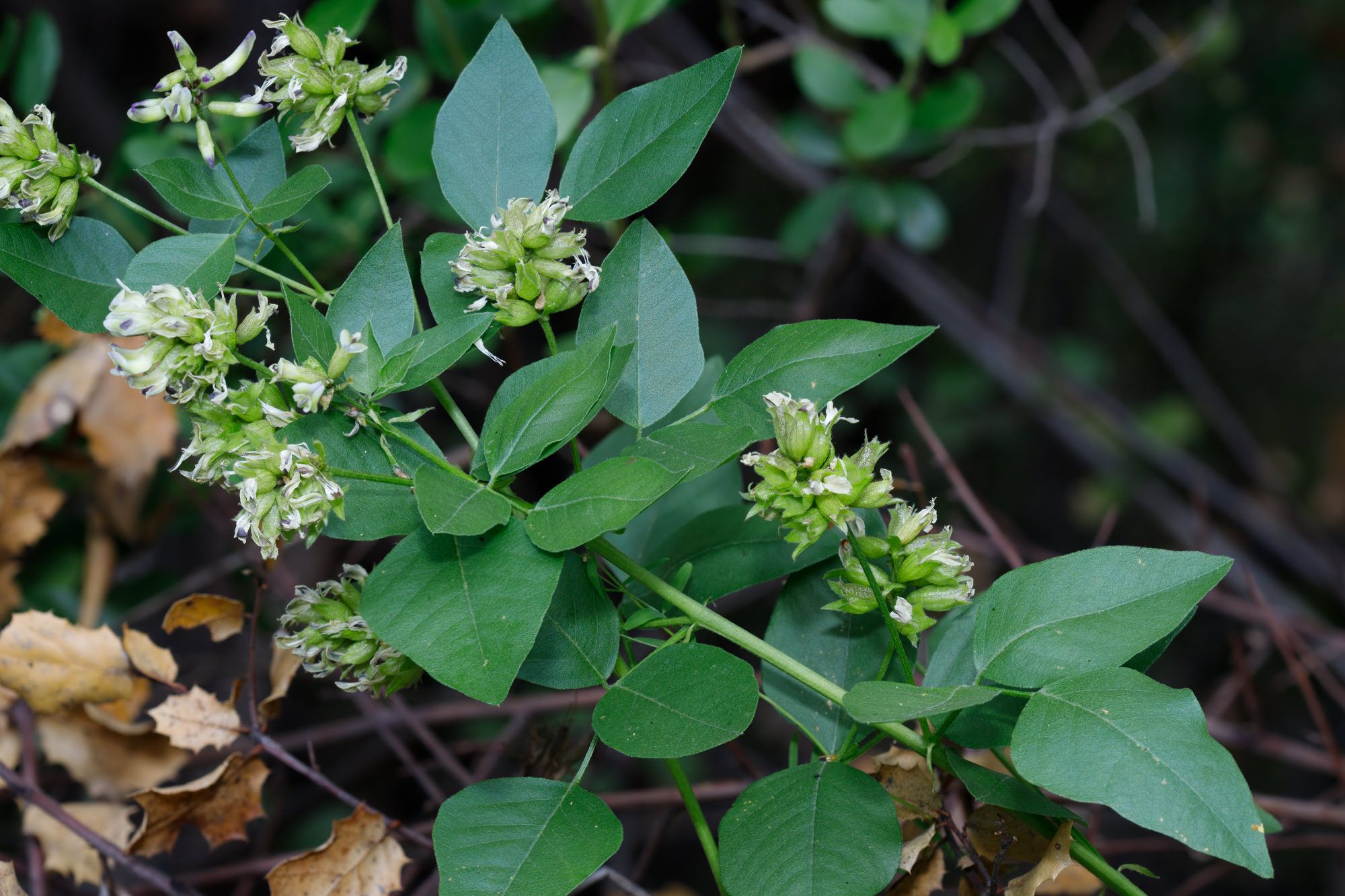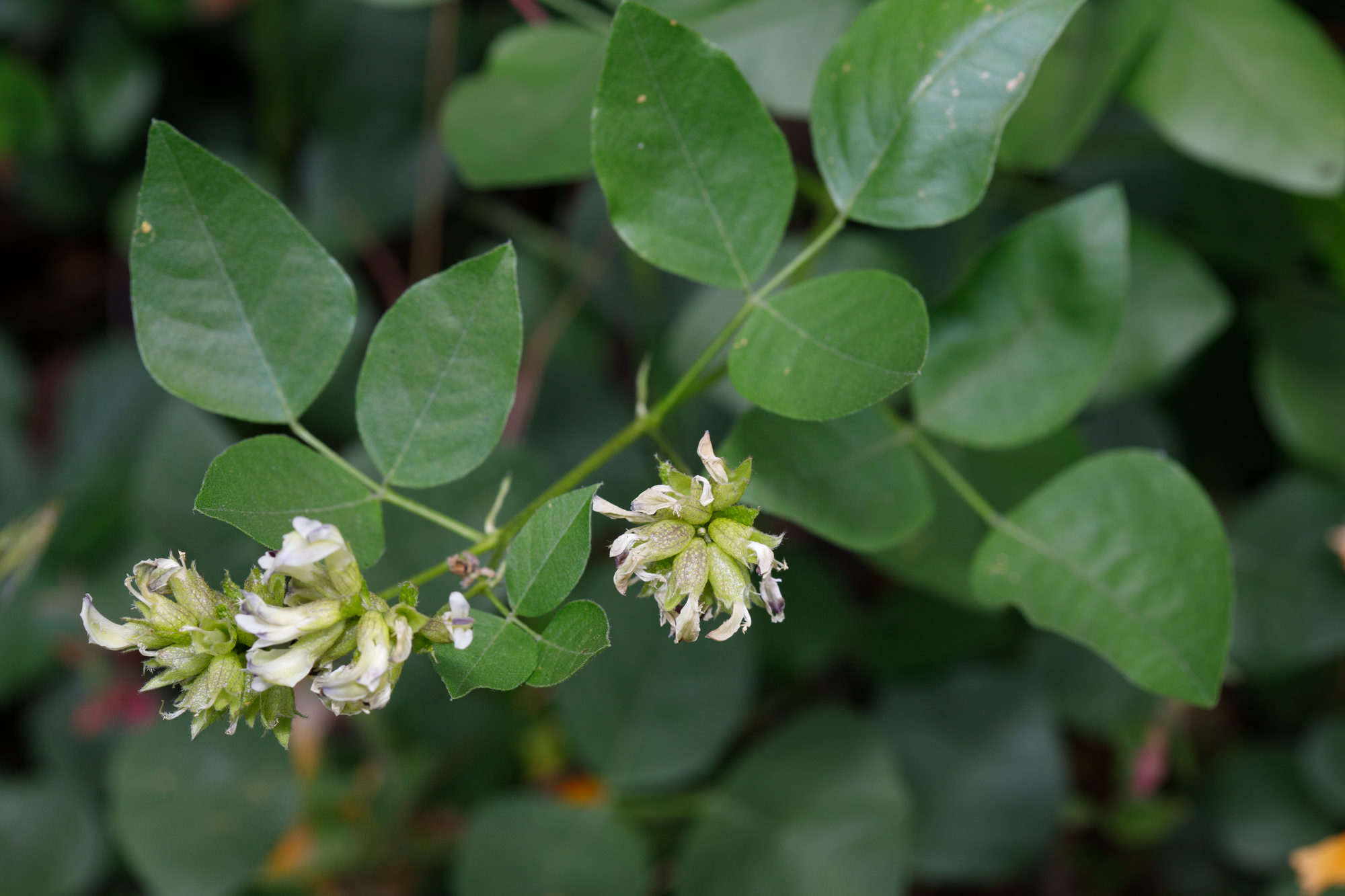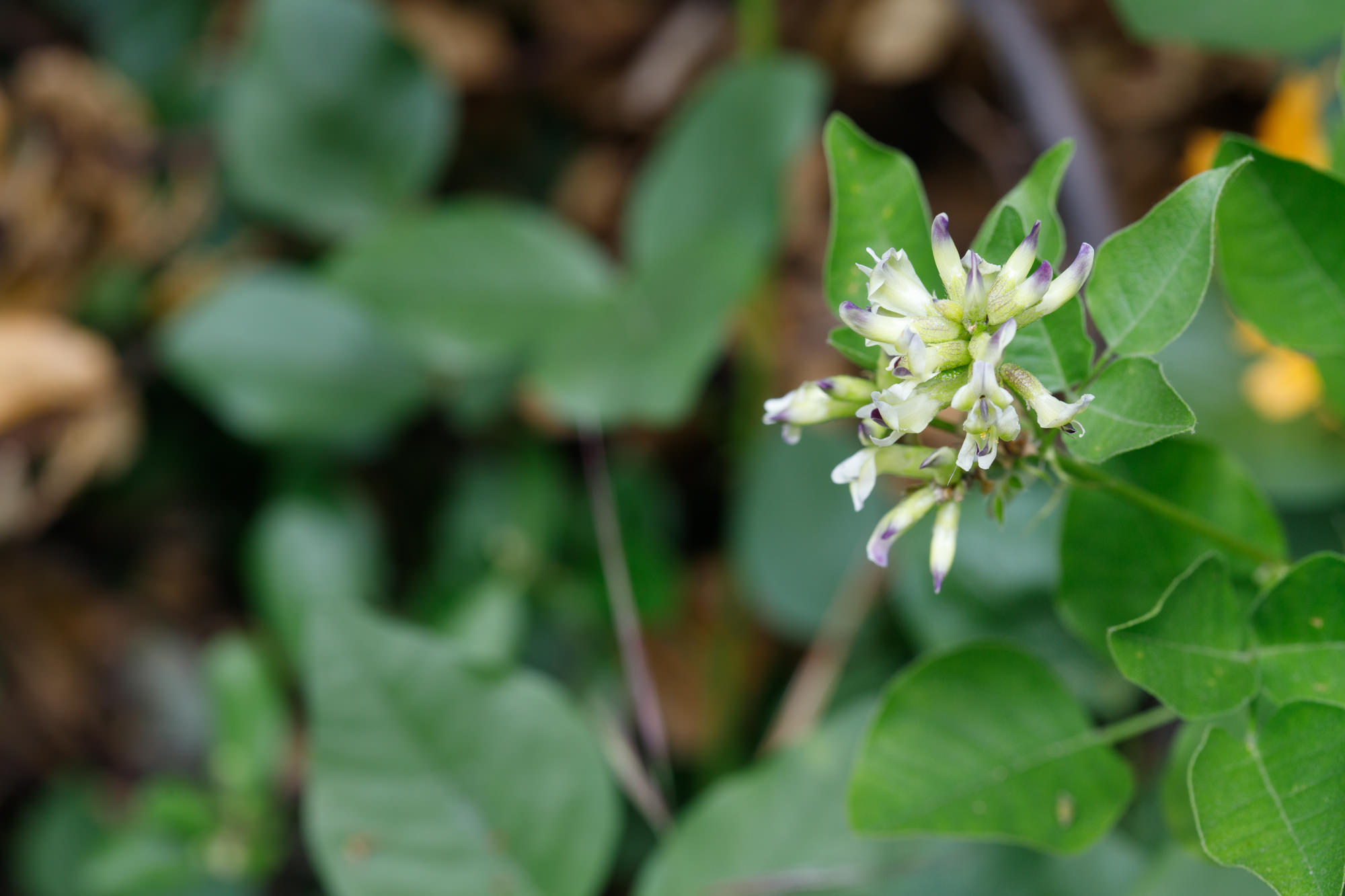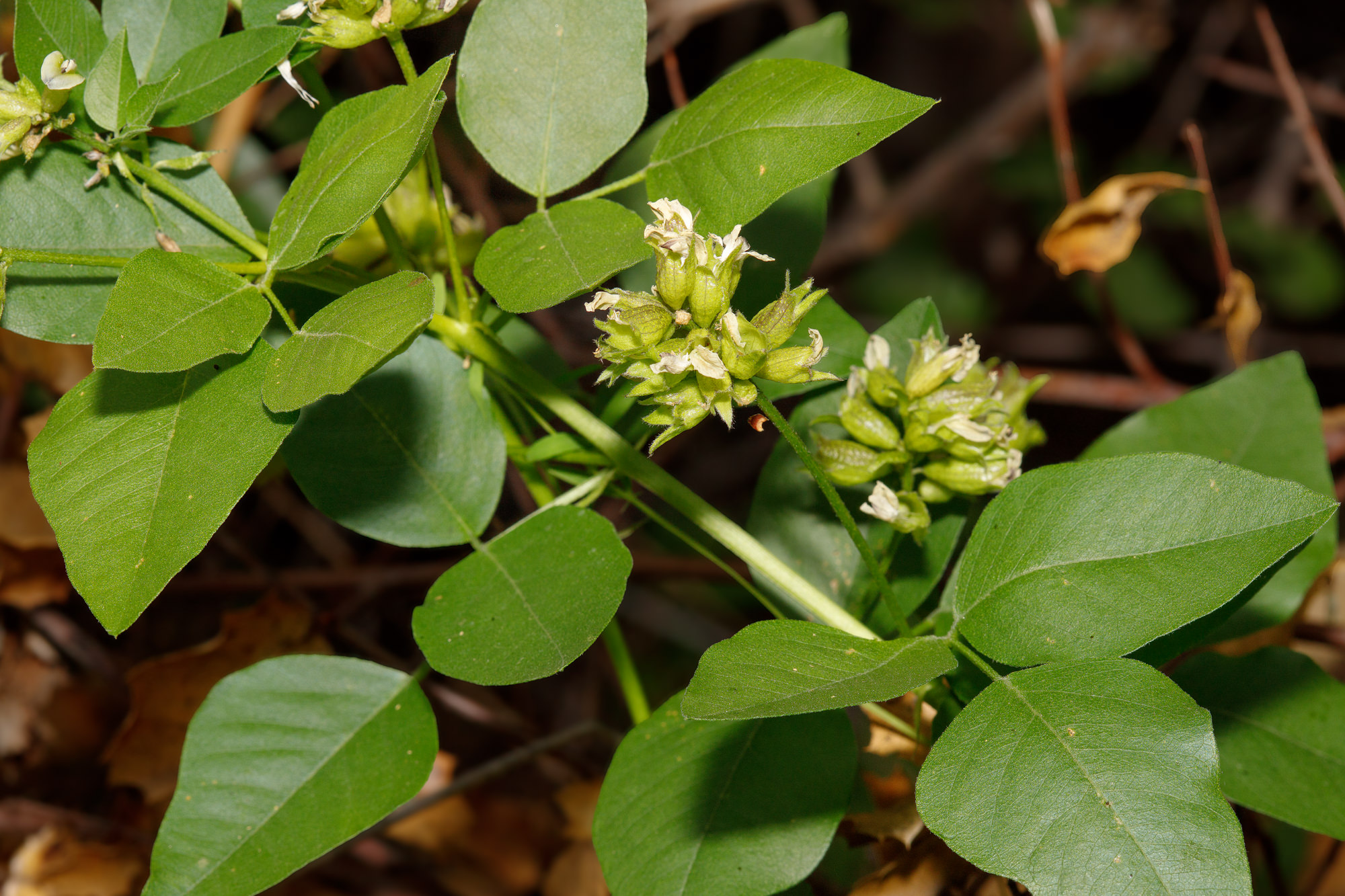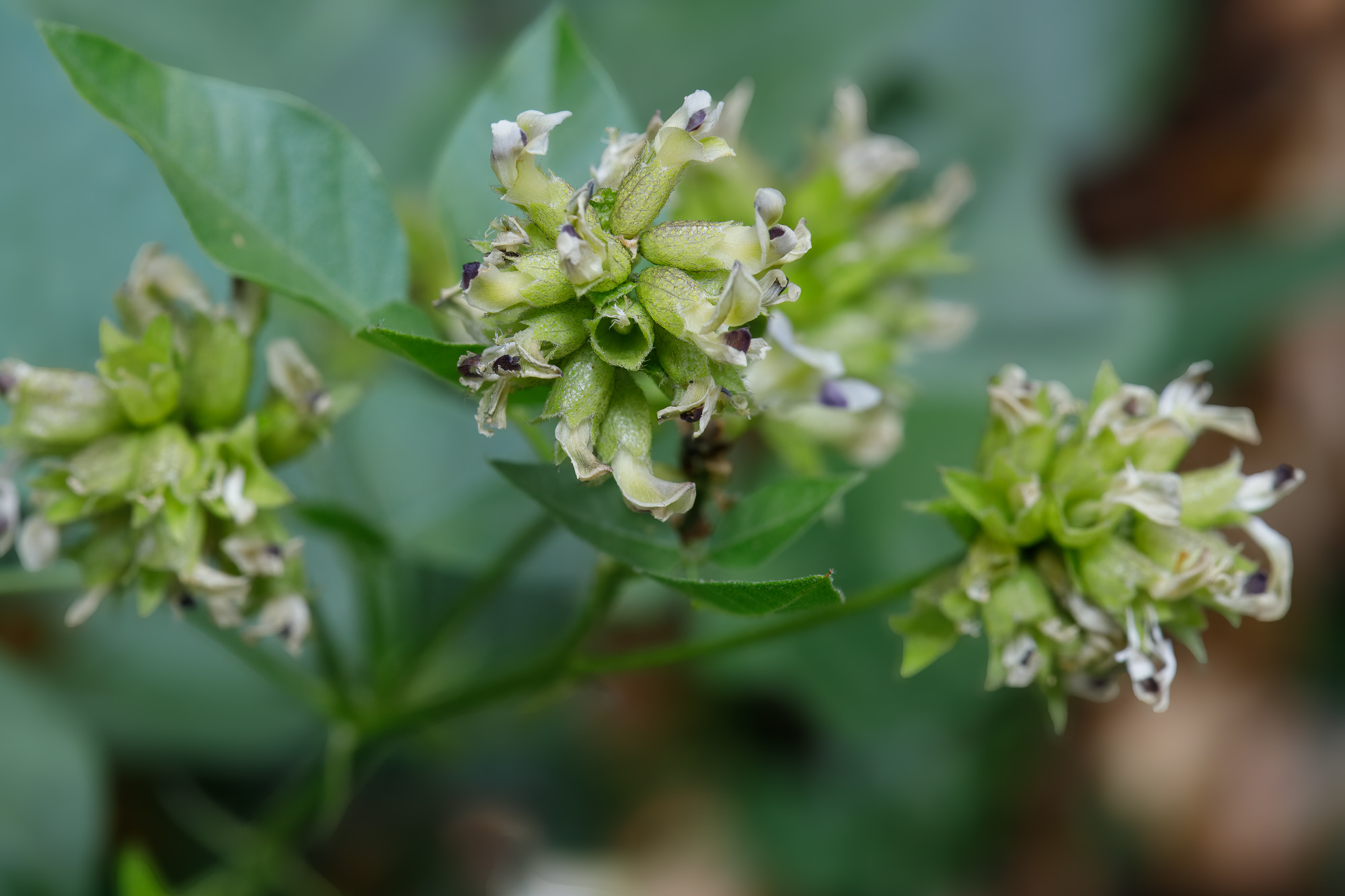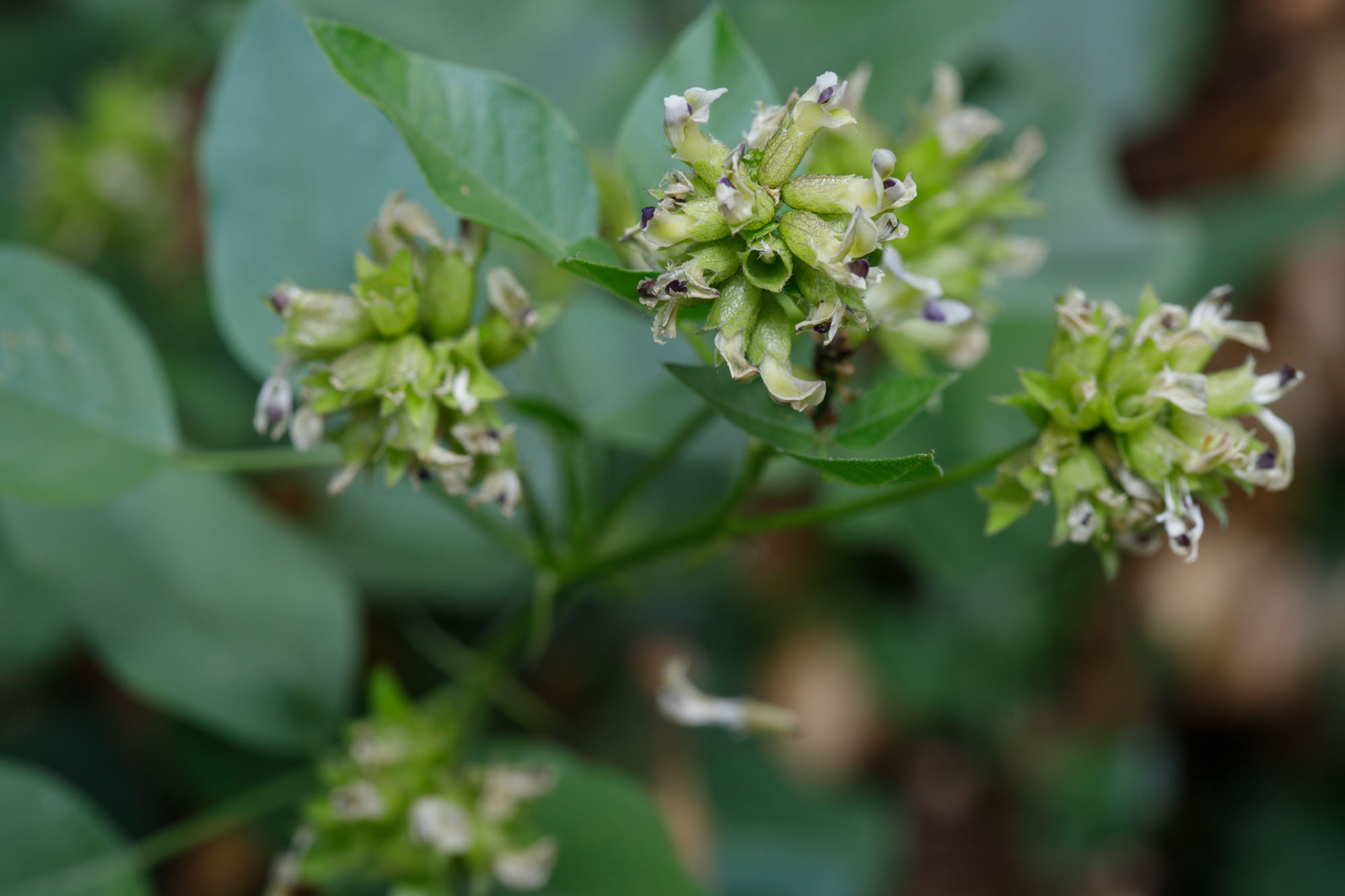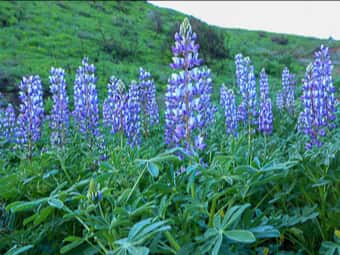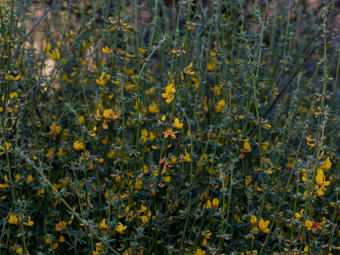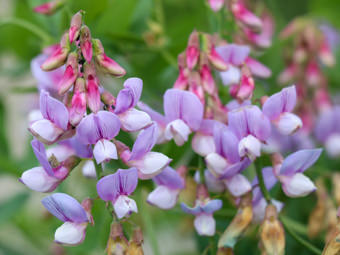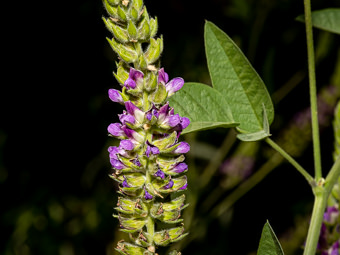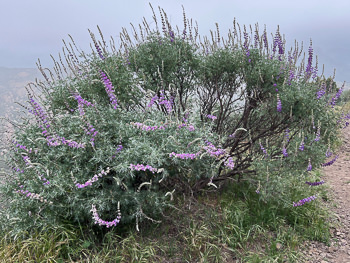Scurfpea
- Rupertia physodes
| Common Name(s): | Scurfpea |
| Scientific Name: | Rupertia physodes |
| Family: | Fabaceae (Legume) |
| Plant Type: | Annual |
| Size: | up to 1 meter |
| Habitat: | Chaparral, oak woodland |
| Blooms: | May to July |
| Fire Response: | Sprouts From Stump |
Rupertia physodes, is known by at least three common names: California tea, forest scurfpea, or California rupertia. This perennial herbaceous plant/subshrub is a member of the pea family (Fabaceae). Native to western North America, especially California, and is typically found in chaparral, oak woodland, and some forested habitats. Preferring dry slopes or disturbed areas should indicate that one could find this plant in most areas of the Santa Monica Mountains. I stumbled upon this plant in Malibu Creek State Park on a trail I had never hiked before and observed six plants in close proximity to each other and the trail. Easily missed by most of us - probably because this plant is not as charismatic as it's lupine cousins.
Found primarily in California, but its range may extend into parts of Oregon and northern Baja California. Elevational range typically from sea level to about 6,000 feet (1,800 meters).
Key Characteristics:
This plant often forms in low mounds or clumps; can grow up to 1 meter (about 3 feet) tall. Like many legumes, Rupertia physodes improves soil fertility by fixing atmospheric nitrogen through root nodules.. The leaves are Trifoliate (three leaflets) - it is also another plant with leaves of 3 that have a passing resemblance of poison oak. The leaflets are oval or lance-shaped. The taproot is a feature developed from evolving in dry climates, which enables it survive years with little rain.
Flowers are small and pale greenish-white to cream, sometimes with purplish or pink tinges, and arranged in loose clusters (racemes). Blooming usually occurs late spring to early summer (May to July). Fruits are small, inflated legume pods, typically having a single seed. The pods have a distinct papery texture and usually take on tan shade when mature. The shape is similar to a bladder [hence the 'physodes' part of the plant's scientific name].
Response to Fire: able to resprout from the root crown after fire
Found primarily in California, but its range may extend into parts of Oregon and northern Baja California. Elevational range typically from sea level to about 6,000 feet (1,800 meters).
Link to Calflora.net - the best source of this fascinating information.
Name Origin: Rupertia —named for Rupert Charles Barneby (1911-2000), a self-taught botanist who was acclaimed as one of the world’s leading taxonomists and a world expert in Fabaceae and Menispermaceae.
physodes — bladder-like
Contributed by George Sherman
Featured Plants in the Fabaceae (Legume) Family:
Last modified: May 28 2025 09:44:55.
Number of Images: 13
Image Size Total: 5,489,659
References:
Wildflowers of the Santa Monica Mountains, by Milt McAuleyFlowering Plants: The Santa Monica Mountains, Coastal and Chaparral Regions of Southern California, by Nancy Dale
Chumash Ethnobotany: Plant Knowledge Among the Chumash People, by Jan Timbrook
Leaf Shapes Primer - Botanical Terms for Leaves: - Link

